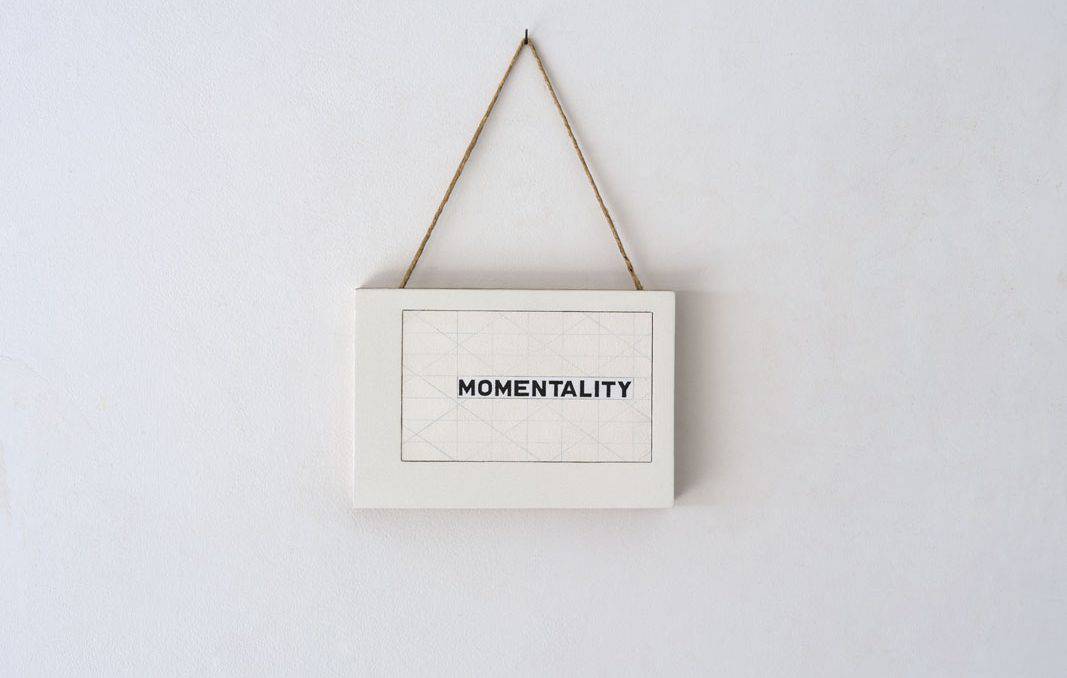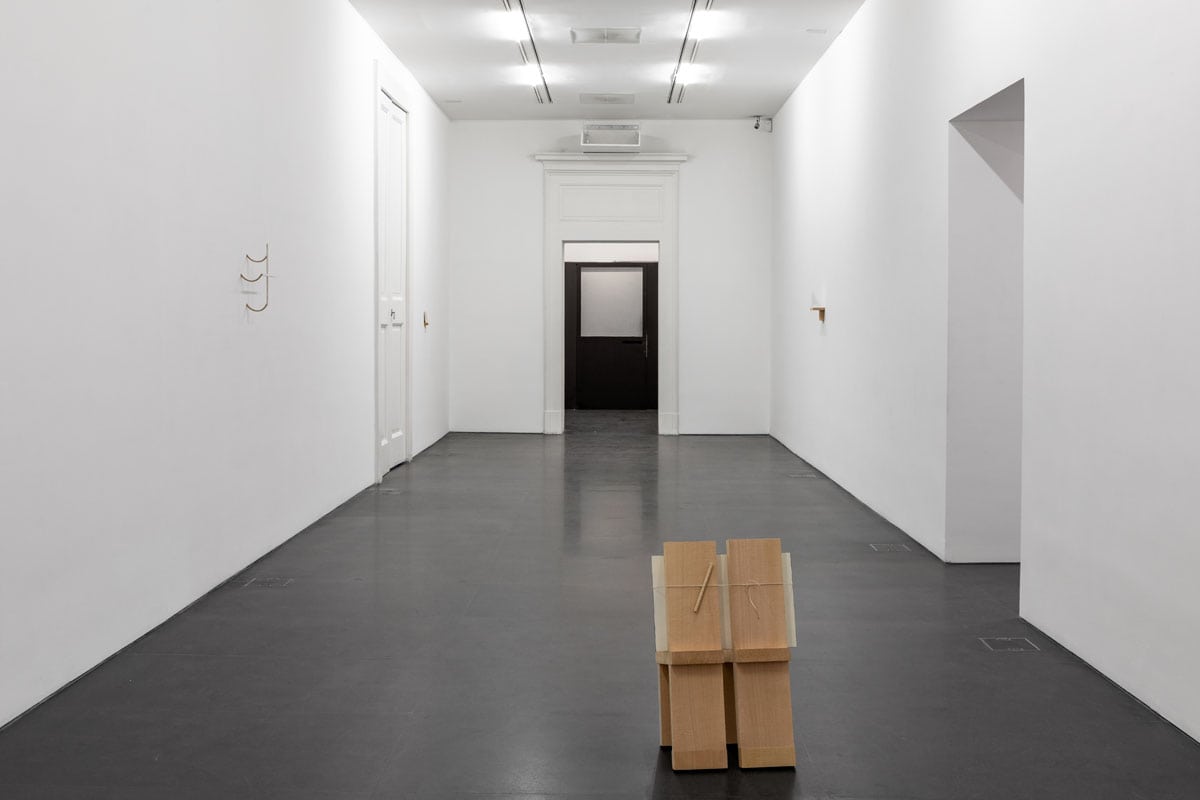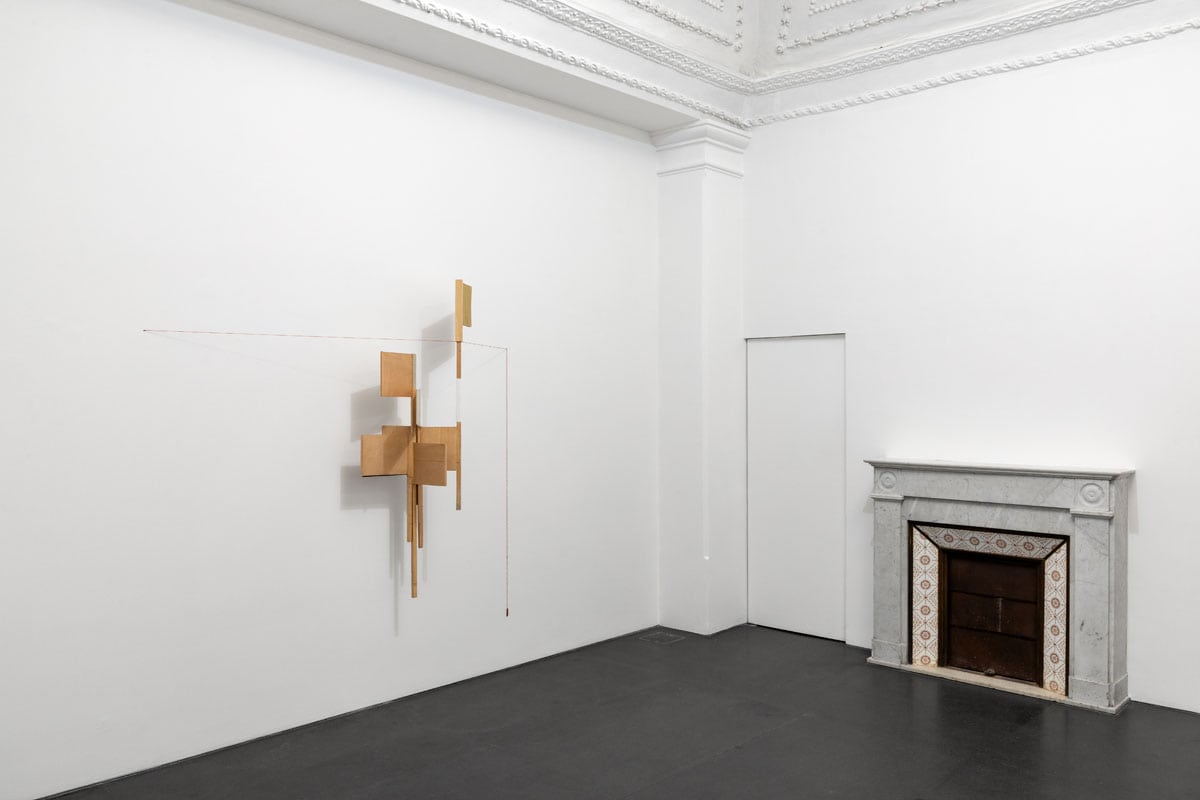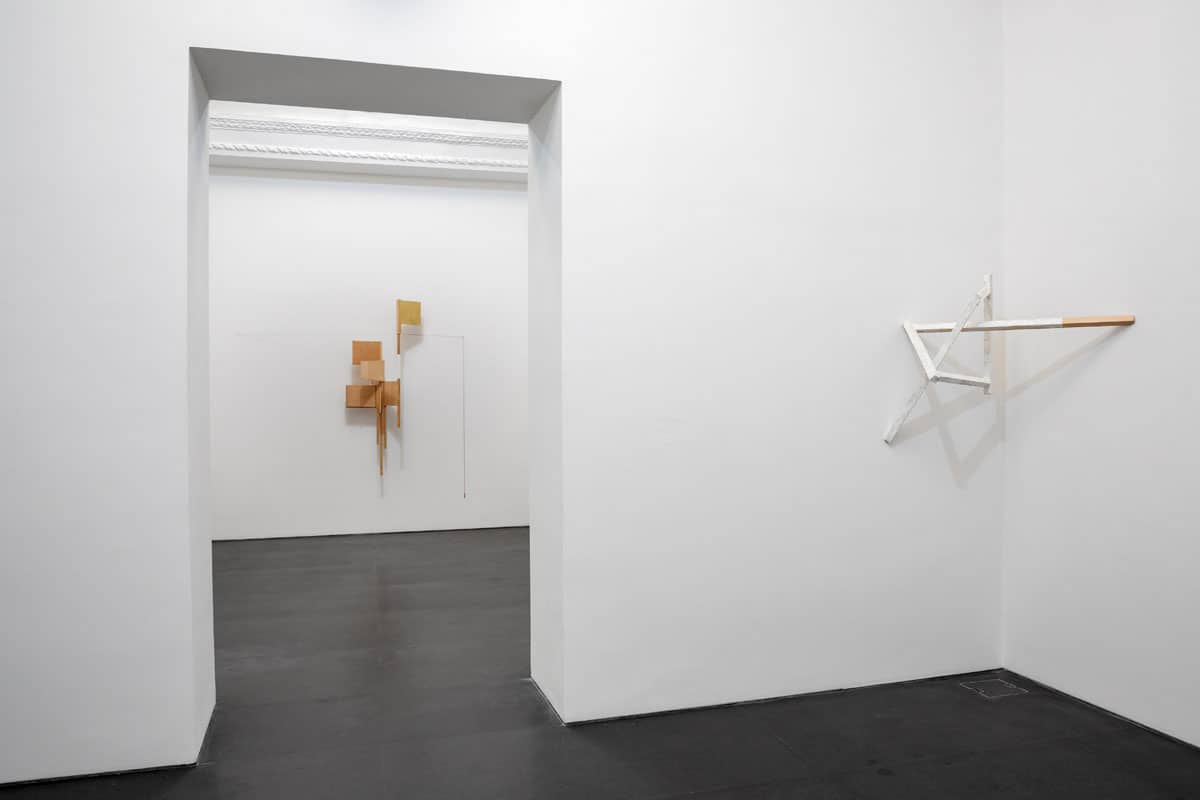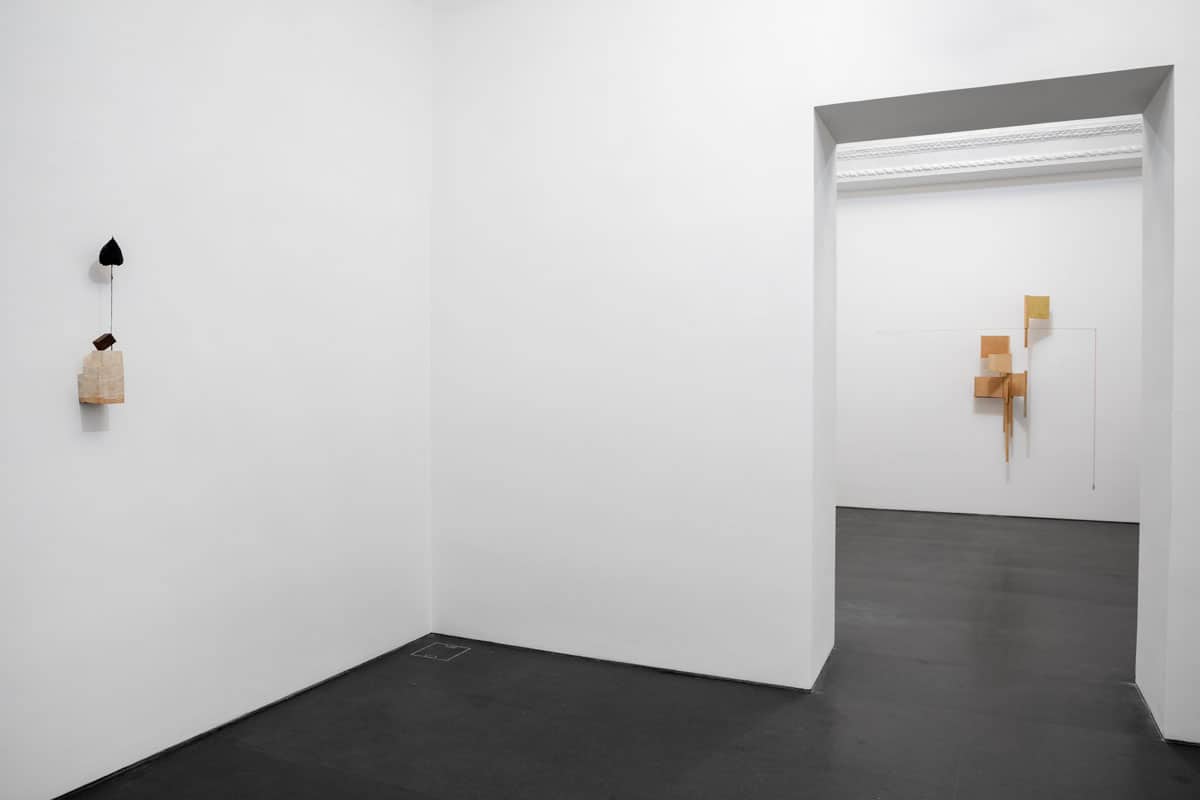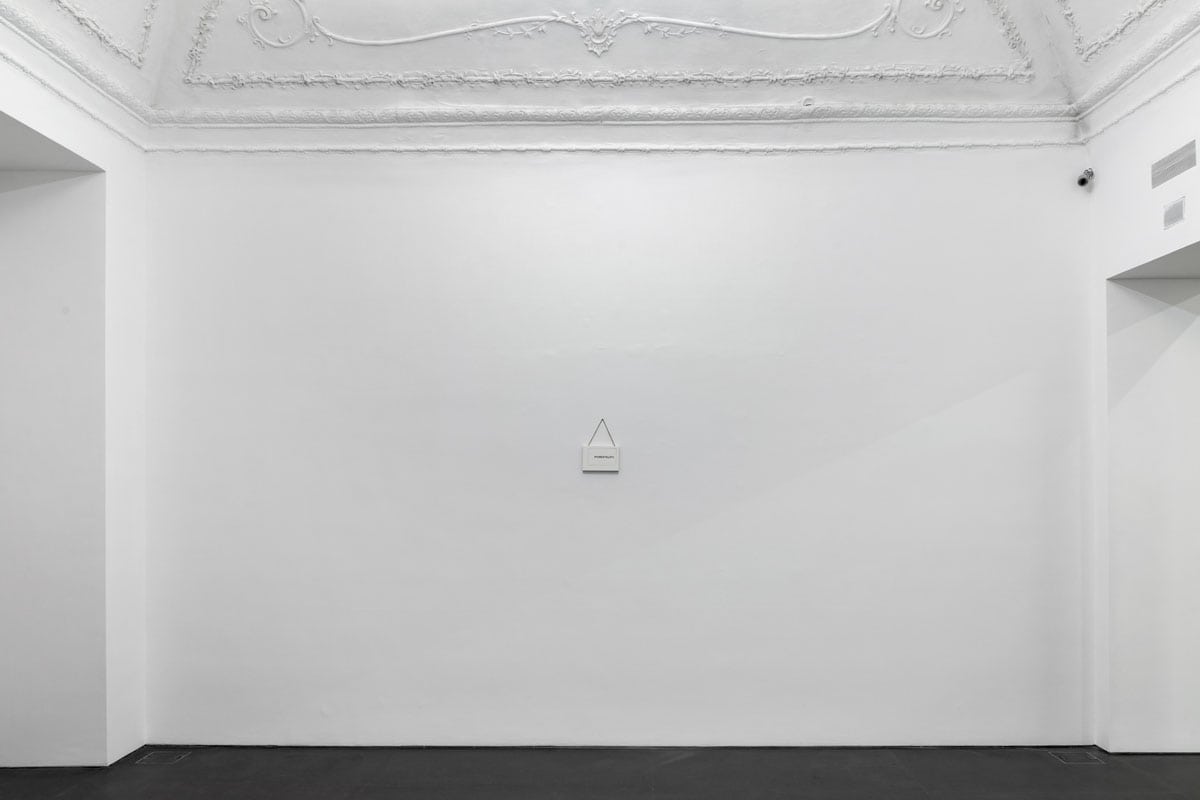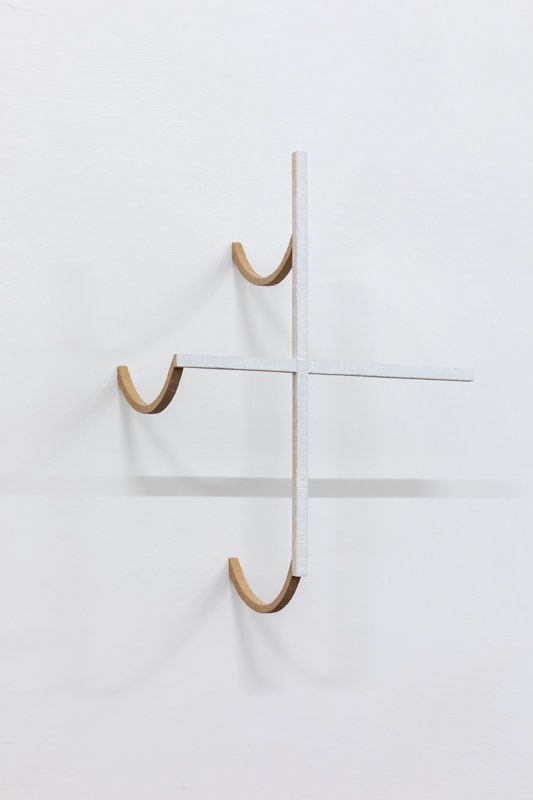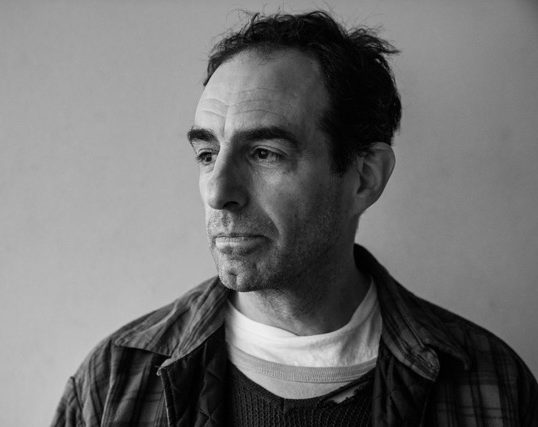On Thursday, January 18, 2024, Lia Rumma Gallery in Naples opens the first solo exhibition in Italy by American artist Paul Wallach, entitled Momentality.
In his sculptures, generally of small dimensions, Paul Wallach (New York, 1960) uses a variety of materials: wood, plaster, canvas, paint, string, metal, sometimes glass/mirror. Often these wall sculptures cast ephemeral reflections that reveal painted reliefs and traces of abstract horizons and delicate three-dimensional forms. In some cases the sculptures are suspended from the wall by string or wire and can thus be perceived as drawings in space.
In the artist's words: “Sculpture deals essentially with ephemerality, need, fragility, utility, truth, ambiguity, time, light, color, place, space, form, matter, volume, emptiness, autonomy, identity, weightlessness and all its infinite combinations".
For his first exhibition in Italy, the artist presents a selection of recent as well as some historical works. Referring to the title the artist explains: Momentality as a word does not as yet exist in the dictionary. I combined the words Moment and Monumental and in doing so, I simply refer to the monumentality of the moment. The moment being that which can be seen as insignificant, banal yet at the same time that which defines all of everything. As, that what happens in the moment, inevitably, effects all that follows. The creative process and the resulting oeuvres being prime examples.
Momentality is also the title and leitmotiv of the work at the gallery’s entrance, that opens the exhibition. It is the lettering transcribed in black on a small wooden tablet painted white, attached to the wall by string. After all, the titles of Wallach's works are always meticulous constructions. The artist carefully chooses fonts, use of capital letters, spacing, punctuation. In a sense, the titles are as if sculpted, emerging from the works themselves and establishing an equivalence between the objects and their titles. As philosopher Gilles Deleuze argued, concepts are also images, images of thought. Understanding a concept is no more difficult nor easier than looking at an image.
The defining walls of the gallery, the space between and around the sculptures open the stage for a meditative interval. As in the case of the work s'effacée (2023), a calendar remnant drawn on paper and canvas, which reposes on a small wooden ledge acting as a reference to Joseph Kosuth's exhibition "The Eighth Investigation (A.A.I.A.I.) Proposition 6" which opened Lia Rumma’s first gallery in 1971. For Wallach, the work is always the creation of a new space-time (even if it is not about the telling of a story in a given time, space or place). So each piece is like a new syntax, the result of the complex of intercurrent relationships between various poetic and compositional elements.
